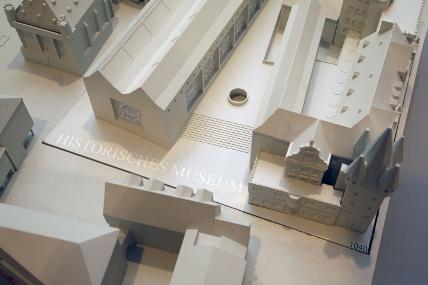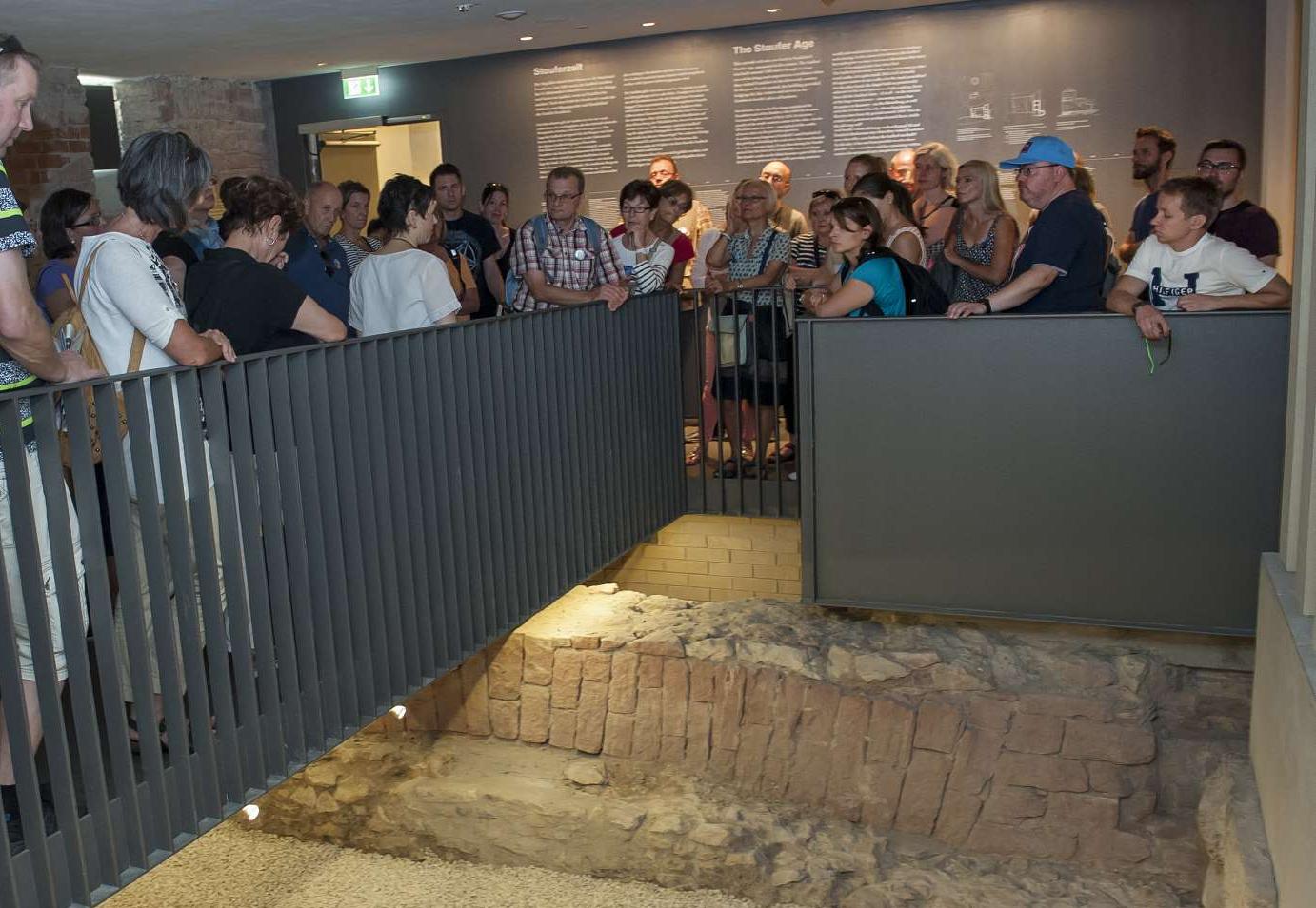



Staufer period
In the basement of the old Staufer Königspfalz (a temporary seat of power for the Holy Roman Emperor) the most important exhibition object is the building itself, the Staufer building. Visitors walk over a bridge through excavated walls, wells and canals and continue to the treasury where they will find crowns, sceptres and orbs.
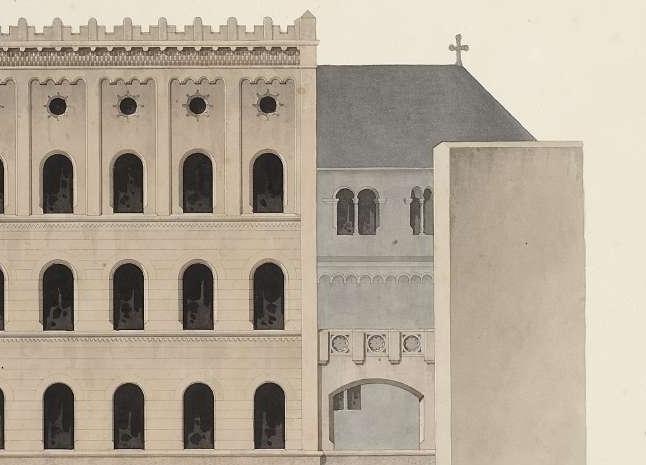
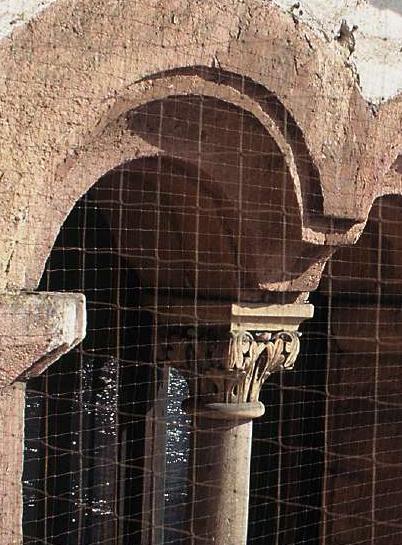


Staufer Building
During the reign of the Hohenstaufen king Philip of Swabia, a chapel was built on the east of the tower from 1200 onwards. In the basement, visitors can admire the original flooring from the Staufer period. River pebbles have been added in a few places to recreate the original impression. The narrow, irregularly shaped window and the plaster in the window frame have also been preserved in their original form.
In the Staufer period, the basement of the chapel was only accessible from above through a hatch. It is therefore assumed that precious things, if not the imperial insignia themselves, were kept there. The presentation of the crown, orb and sceptre – replicas of the original coronation insignia from the early 20th century – refers to this. This also refers to the importance of the Hohenstaufen rulers for Frankfurt as a place of election and coronation. When they came to Frankfurt, the Hohenstaufen stayed in the Saalhof.
A model of the residential tower and the "Palas" (palace) from around 1200 invites visitors to explore the Staufer building. On levels 1, 2 and 3, the Collector's Museum has been integrated into the Staufer Building.
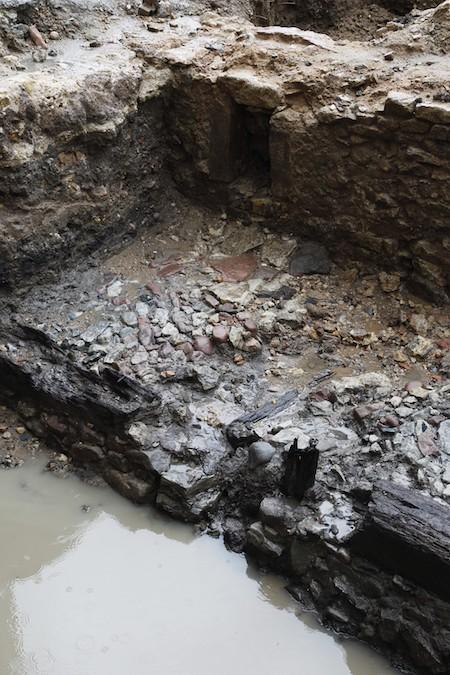
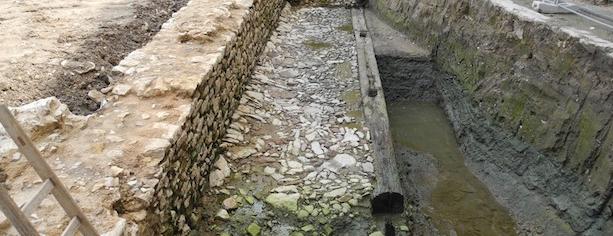


Stauferhafen
Historical Life around the Staufer harbour (Stauferhafen)
The journey to Frankfurt by boat on the Main is documented in the first written records of Frankfurt from 794 onwards. In 1149, Archbishop Albero travelled across the Main with 40 ships, including residential and kitchen ships, to attend the court day of Konrad III. Only a few years later, on 4 March 1152, the participants in Frankfurt's first royal election travelled by ship to Aachen for Barbarossa's coronation ceremony. The written sources prove this: Anyone who thought anything of himself took the ship. The goods that were traded in Frankfurt were delivered by ship.
The discovery of the Stauferhafen in June 2012
In June 2012, the bored pile wall for the new buildings of the HMF quarter had been completed and the excavation pit was just being dug. The excavators were standing in the south of the pit, very close to the baroque Bernuspalais. When the excavators came across a paved path that was fixed with a well-preserved wooden plank, the work stopped.
It soon became clear to the city archaeologists that this was an unusual find. Over a length of about 20 metres, this path and wooden fortification could be traced. The well-preserved pavement and its connection to the Staufer south wall allowed only one assumption: it must have been a quay of the Saalhof, which had been built at the same time as the Staufer construction of the late 12th century. The chronological determination of the wooden beam on felling dates of 1303 or 1314 was available in July 2012 and confirmed this assumption.
The beam was a wearing part, which had last been replaced at the beginning of the 14th century. In the middle of the 14th century, this quay had been filled in because, in the course of the city expansion authorised in 1333, the city wall at this point was moved southwards, towards the river. Thus, a unique testimony to the life of Frankfurt's Staufer city has been preserved in the HMF. Its new highlight is located directly in the entrance area. Right at the beginning of the museum visit, it is made visible: the important location of the city on the river, the ford through the Main in the immediate vicinity (Fahrtor), the resulting traffic junction, the place increasingly used and visited by kings and merchants – all this is made visible to the visitors at the start with the original quay.
In retrospect, the desire to present the highlight at the site of discovery under the best conservation conditions improved the architects' original design, even though the construction time was extended by a year due to the redesign and clarification of details. The originally planned roof between the Bernuspalais and the entrance building has been replaced by two roofed and glazed passages, with the harbour in between. On the north façade of the old building, guests in the Sonnemann Hall can step outside through the double doors and view the quay.
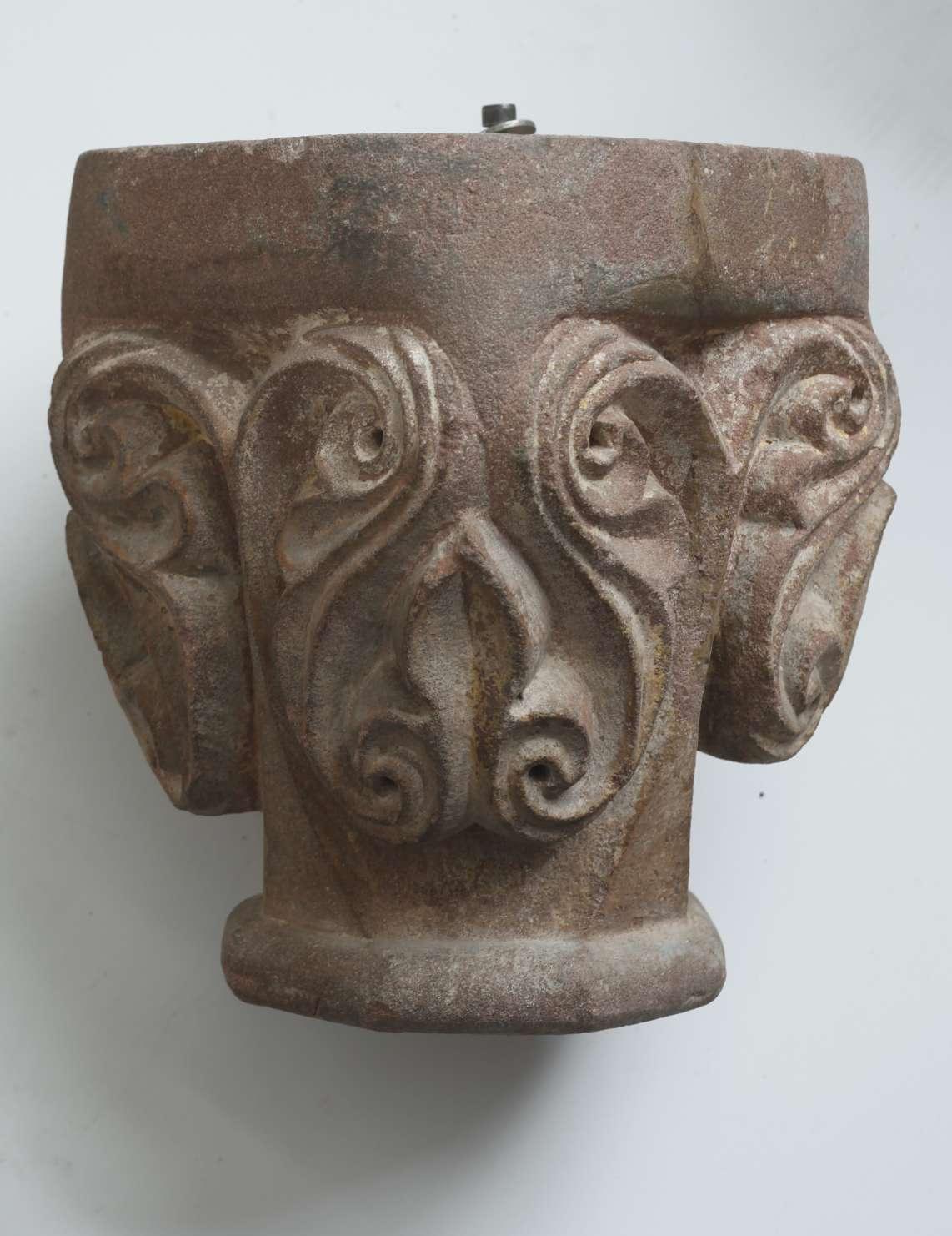
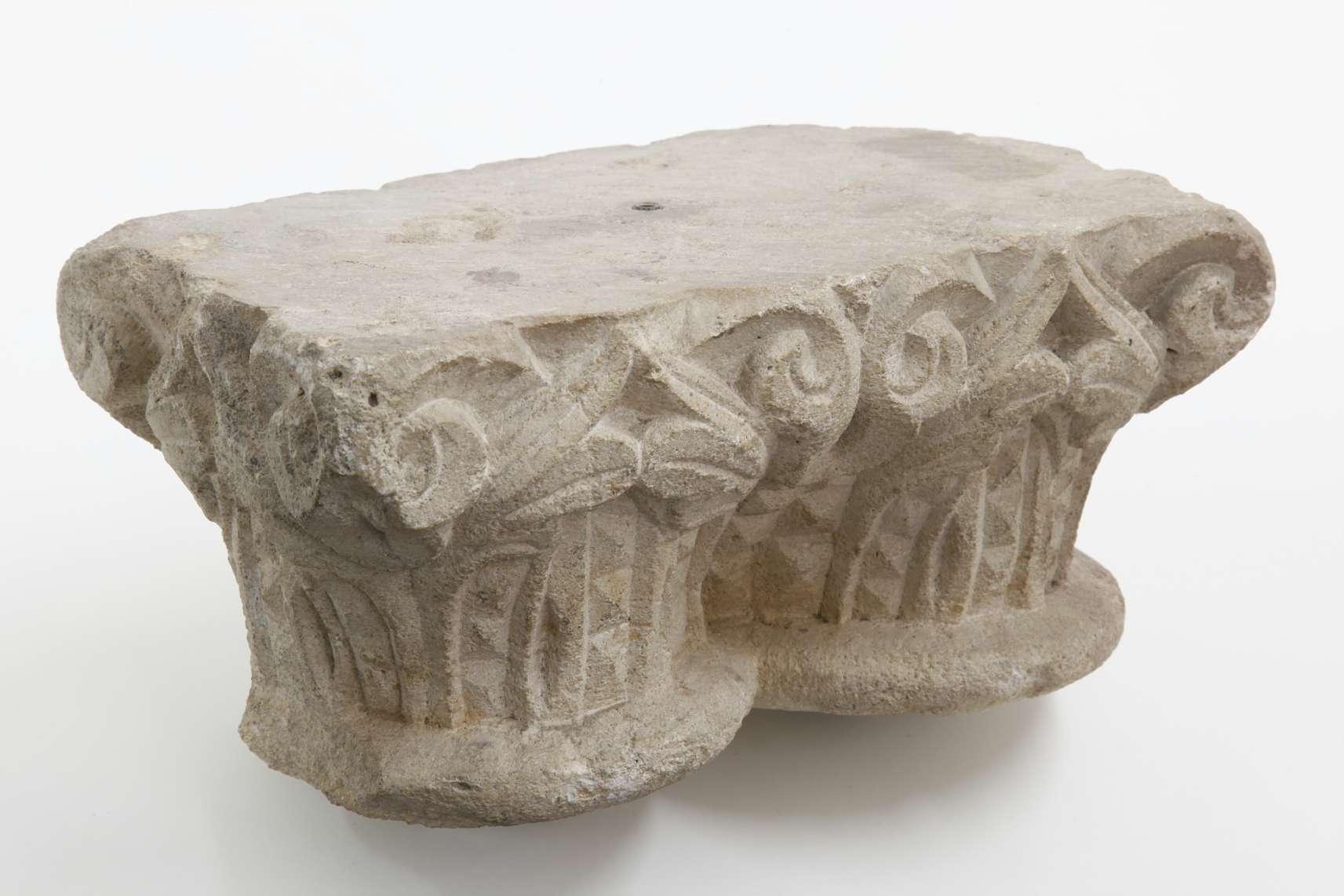


Zeitgeist
The kings left behind their portraits on Staufer pfennigs. Only the king was permitted to mint coins. Ceramic and metal vessels and a fireplace in the palace kitchen show how people cooked 800 years ago. The emblem of the Knobloch family – three knotted garlic plants – reminds us that the Saalhof was an important place for trade and for visitors of the trade fair. Jacob Knobloch acquired the Staufer building in the 14th century from King Louis IV. From then on it was a port of call for cloth traders offering their goods.
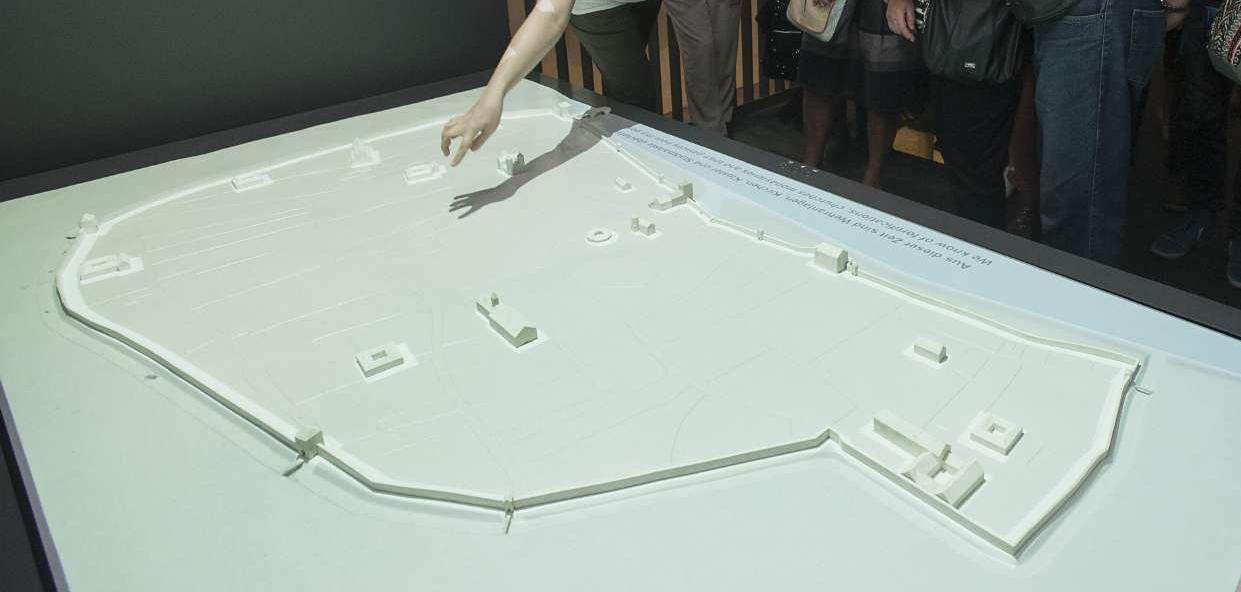
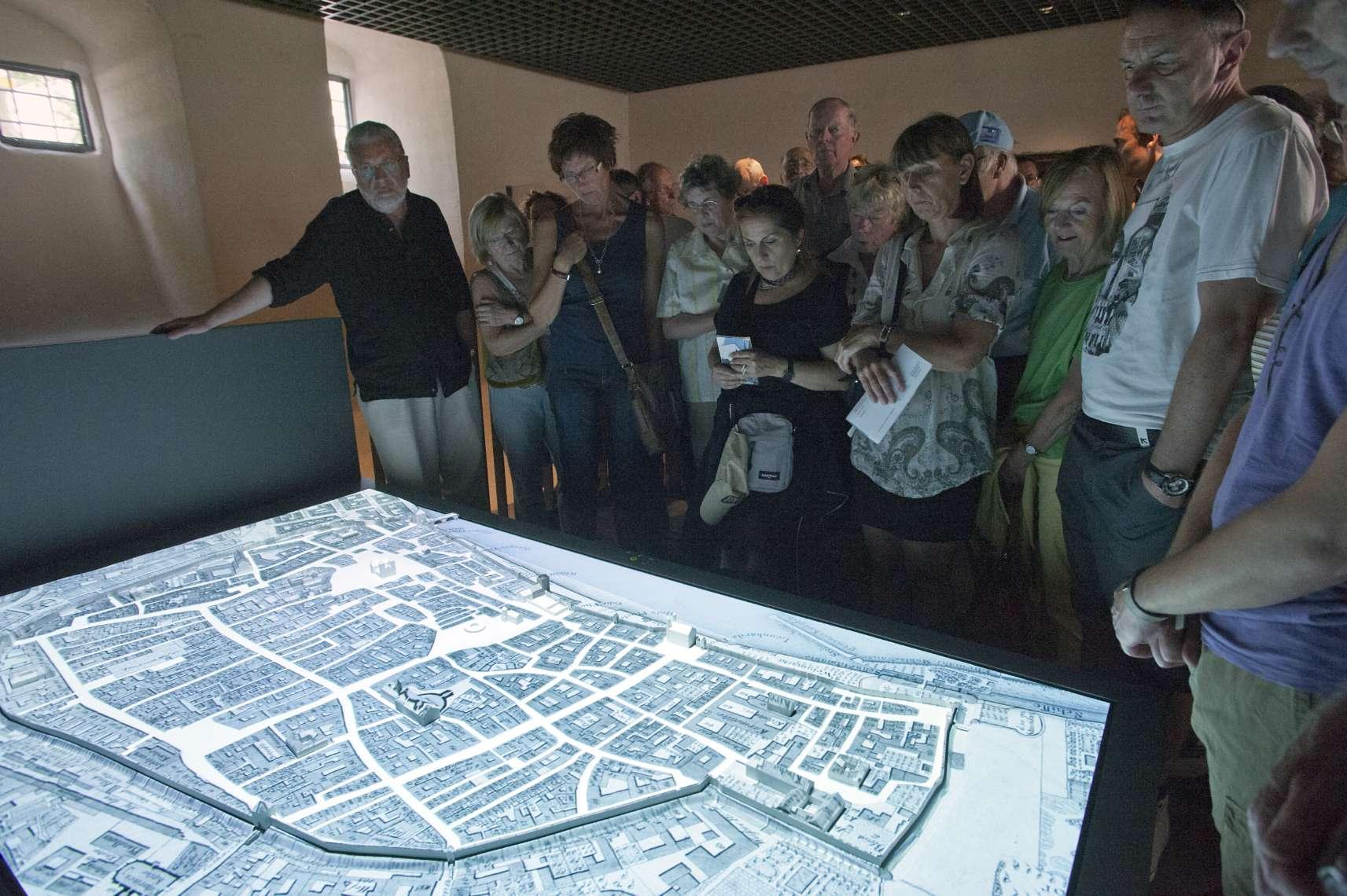


Interactive model of the Old Town
It shows the Old Town at the time when the Saalhof emerged, around 1200. In an eight-minute-long animation, visitors learn about the expansion and changes of the city on the model.

